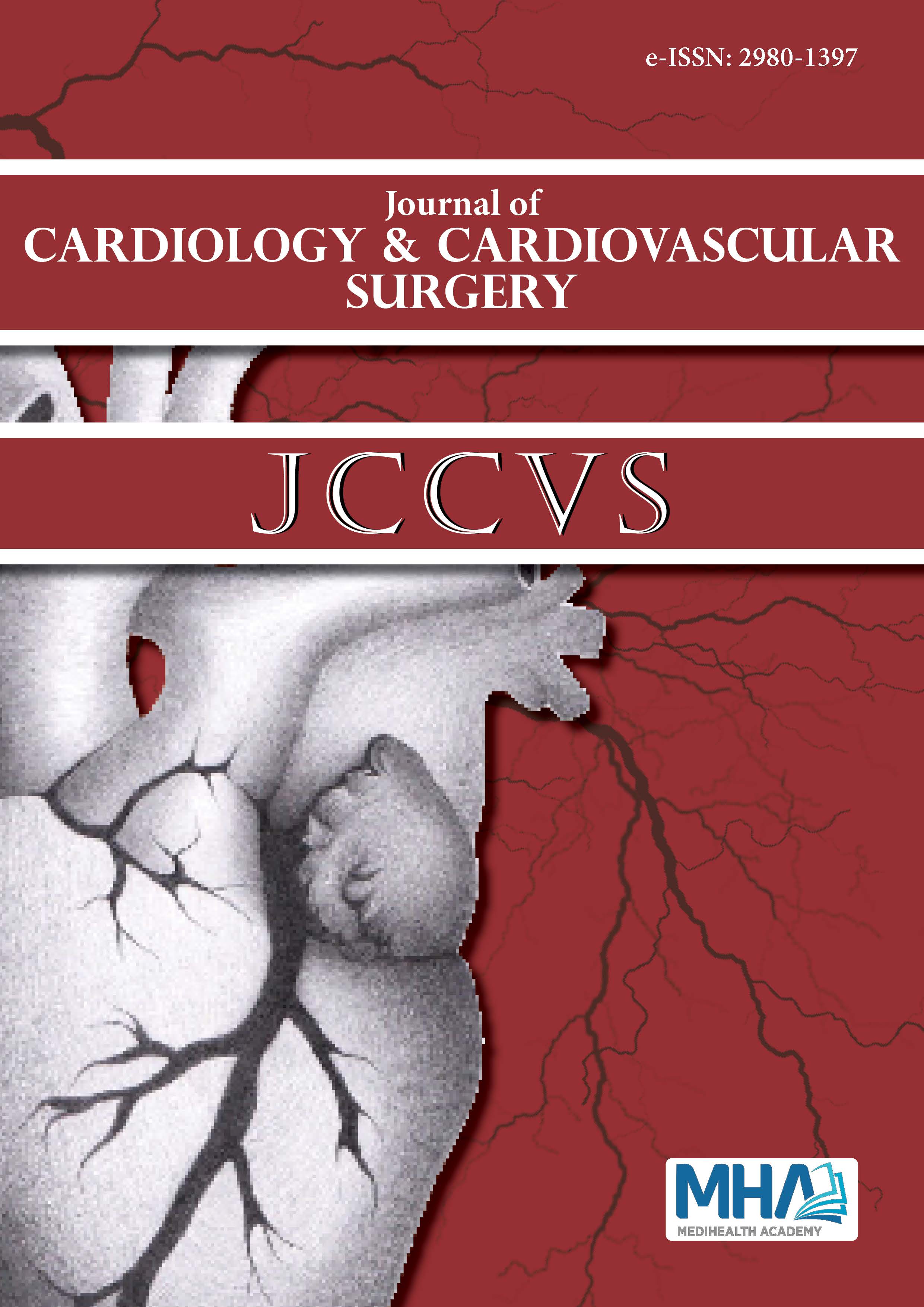1. Powell-Wiley TM, Poirier P, Burke LE, et al. Obesity and cardiovascular disease: a scientific statement from the American Heart Association. Circulation. 2021;143(21):e984-e1010. doi:10.1161/CIR.0000000000000973
2. Bagheri J. Effects of body mass index on the early surgical outcomes after coronary artery bypass grafting. Turkish J Thorac Cardiovasc Surg. 2014; 22(2):253-259
3. Perrotta S, Nilsson F, Brandrup-Wognsen G, Jeppsson A. Body mass index and outcome after coronary artery bypass surgery. J Cardiovasc Surg (Torino). 2007;48(2):239-45.
4. Forgie K, Bozso SJ, Hong Y, et al. The effects of body mass index on outcomes for patients undergoing surgical aortic valve replacement. BMC Cardiovasc Disord. 2020;20(1):255. doi:10.1186/s12872-020-01528-8
5. Le-Bert G, Santana O, Pineda AM, Zamora C, Lamas GA, Lamelas J. The obesity paradox in elderly obese patients undergoing coronary artery bypass surgery. Interact Cardiovasc Thorac Surg. 2011;13(2):124-127. doi: 10.1510/icvts.2010.256677
6. Karthik S, Grayson AD, McCarron EE, Pullan DM, Desmond MJ. Reexploration for bleeding after coronary artery bypass surgery: risk factors, outcomes, and the effect of time delay. Ann Thorac Surg. 2004;78(2):527-534. doi:10.1016/j.athoracsur.2004.02.088
7. Engel AM, McDonough S, Smith JM. Does an obese body mass index affect hospital outcomes after coronary artery bypass graft surgery? Ann Thorac Surg. 2009;88(6):1793-800. doi:10.1016/j.athoracsur.2009.07.077
8. Allama A, Ibrahim I, Abdallah A, et al. Effect of body mass index on early clinical outcomes after cardiac surgery. Asian Cardiovasc Thorac Ann. 2014; 22(6):667-673. doi:10.1177/0218492313504092
9. Shirzad M, Karimi A, Armadi SH, et al. Effects of body-mass index on early outcome of coronary artery bypass surgery. Minerva Chir. 2009;64(1):17-23.
10. Reeves BC, Ascione R, Chamberlain MH, Angelini GD. Effect of body mass index on early outcomes in patients undergoing coronary artery bypass surgery. J Am Coll Cardiol. 2003;42(4):668-676. doi:10.1016/s0735-1097(03)00777-0
11. Gruberg L, Weissman NJ, Waksman R, et al. The impact of obesity on the short-term and long-term outcomes after percutaneous coronary intervention: the obesity paradox? J Am Coll Cardiol. 2002;39(4):578-584. doi:10.1016/s0735-1097(01)01802-2
12. Boly CA, Venhuizen M, Dekker NAM, Vonk ABA, Boer C, van den Brom CE. Comparison of microcirculatory perfusion in obese and non-obese patients undergoing cardiac surgery with cardiopulmonary bypass. J Clin Med. 2021;10(3):469 doi:10.3390/jcm10030469
13. Gurbuz O, Kumtepe G, Ozkan H, Karal IH, Ercan A, Ener S. Red blood cell distribution width predicts long term cardiovascular event after on-pump beating coronary artery bypass grafting. J Cardiothorac Surg. 2016;11(1):48. doi:10.1186/s13019-016-0465-4
14. Eranki A, Wilson-Smith A, Ali U, Merry C. Preoperative patient factors associated with blood product use in cardiac surgery, a retrospective cohort study. J Cardiothorac Surg. 2022;17(1):23. doi:10.1186/s13019-022-01770-5
15. Nolan HR, Ramaiah C. Effect of body mass index on postoperative transfusions and 24-hour chest-tube output. Int J Angiol. 2011;20(2):81-86. doi:10.1055/s-0031-1279676
16. Kartal H, Demirdas E, Sicim H, et al. The effect of body-mass index on postoperative bleeding and blood transfusion in patients with coronary bypass surgery. Heart. 2020;6:8.
17. Mertens I, Van Gaal LF. Obesity, haemostasis and the fibrinolytic system. Obes Rev. 2002;3(2):85-101. doi:10.1046/j.1467-789x.2002.00056.x
18. WHO. The International classification of adult underweight, overweight and obesity according to BMI. Geneva, Switzerland: World Health Organization, 2017. Available from: https://www.who.int/data/gho/data/themes/topics/topic-details/GHO/body-mass-index?introPage=intro_3.html.
19. Engelman DT, Adams DH, Byrne JG, et al. Impact of body mass index and albumin on morbidity and mortality after cardiac surgery. J Thorac Cardiovasc Surg. 1999;118(5):866-873.
20. Yap CH, Mohajeri M, Yii M. Obesity and early complications after cardiac surgery. Med J Aust. 2007;186(7):350-354. doi:10.5694/j.1326-5377.2007.tb00935.x
21. Jarvinen O, Julkunen J, Tarkka MR. Impact of obesity on outcome and changes in quality of life after coronary artery bypass grafting. World J Surg. 2007;31(2):318-325. doi:10.1007/s00268-006-0183-5
22. Birkmeyer NJ, Charlesworth DC, Hernandez F, et al. Obesity and risk of adverse outcomes associated with coronary artery bypass surgery. Circulation. 1998;97(17):1689-1694.
23. Potapov EV, Loebe M, Anker S, et al. Impact of body mass index on outcome in patients after coronary artery bypass grafting with and without valve surgery. European Heart J. 2003;24(21):1933-1941.
24. Keeling WB, Kilgo PD, Puskas JD, et al. Off-pump coronary artery bypass grafting attenuates morbidity and mortality for patients with low and high body mass index. J Thorac Cardiovasc Surg. 2013;146(6):1442-1448.
25. Reeves BC, Ascione R, Chamberlain MH, Angelini GD. Effect of body-mass index on early outcomes in patients undergoing coronary artery bypass surgery. J Am College Cardiol. 2003;42(4):668-676.
26. Sung S-H, Wu T-C, Huang C-H, Lin S-J, Chen J-W. Prognostic impact of body mass index in patients undergoing coronary artery bypass surgery. Heart. 2011;97(8):648-654.

